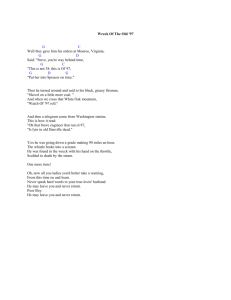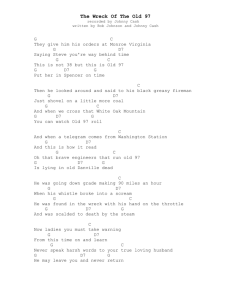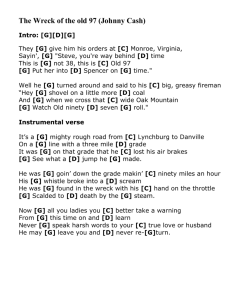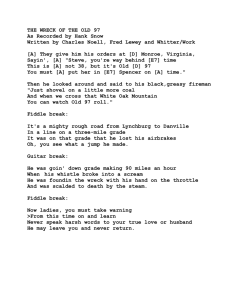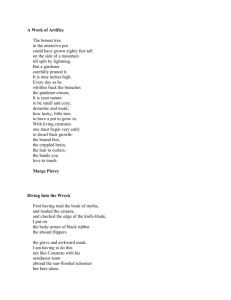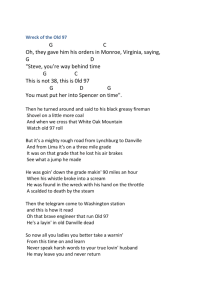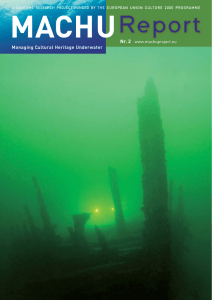MANAGING CULTURAL HERITAGE UNDER WATER
advertisement
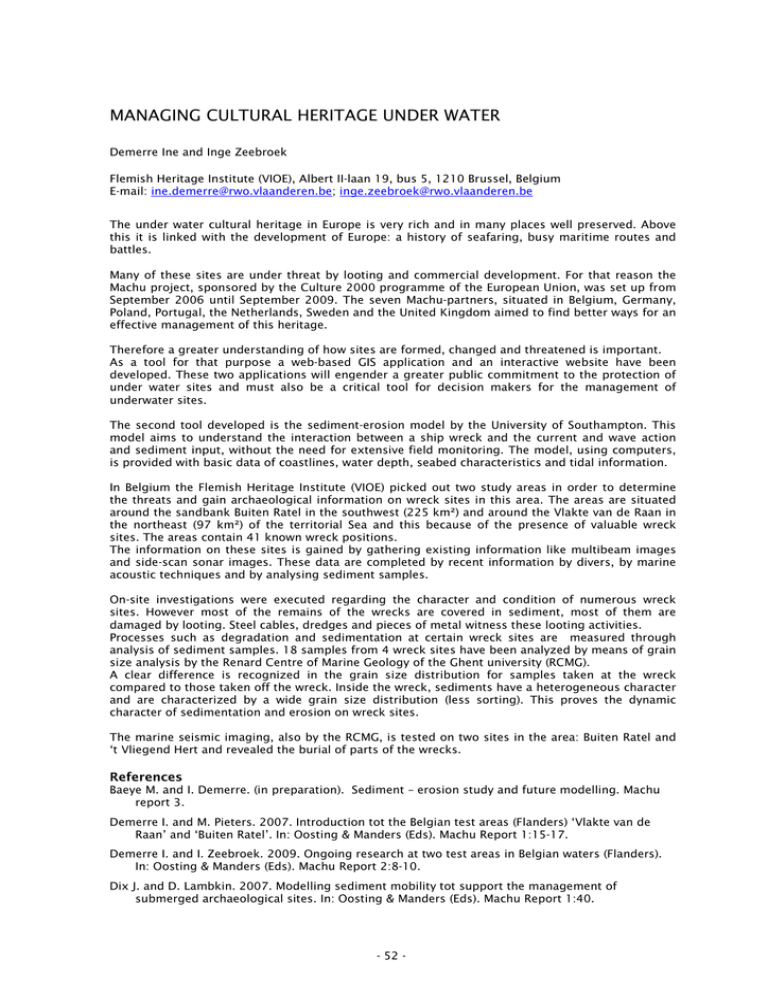
MANAGING CULTURAL HERITAGE UNDER WATER Demerre Ine and Inge Zeebroek Flemish Heritage Institute (VIOE), Albert II-laan 19, bus 5, 1210 Brussel, Belgium E-mail: ine.demerre@rwo.vlaanderen.be; inge.zeebroek@rwo.vlaanderen.be The under water cultural heritage in Europe is very rich and in many places well preserved. Above this it is linked with the development of Europe: a history of seafaring, busy maritime routes and battles. Many of these sites are under threat by looting and commercial development. For that reason the Machu project, sponsored by the Culture 2000 programme of the European Union, was set up from September 2006 until September 2009. The seven Machu-partners, situated in Belgium, Germany, Poland, Portugal, the Netherlands, Sweden and the United Kingdom aimed to find better ways for an effective management of this heritage. Therefore a greater understanding of how sites are formed, changed and threatened is important. As a tool for that purpose a web-based GIS application and an interactive website have been developed. These two applications will engender a greater public commitment to the protection of under water sites and must also be a critical tool for decision makers for the management of underwater sites. The second tool developed is the sediment-erosion model by the University of Southampton. This model aims to understand the interaction between a ship wreck and the current and wave action and sediment input, without the need for extensive field monitoring. The model, using computers, is provided with basic data of coastlines, water depth, seabed characteristics and tidal information. MACHU (Managing Cultural Heritage Underwater) is a three year project In Belgium the Flemish Heritage Institute (VIOE) picked out two study areas in order to determine the threats and gain archaeological information on wreck sites in this area. The areas are situated around the sandbank Buiten Ratel in the southwest (225 km²) and around the Vlakte van de Raan in the northeast (97 km²) of the territorial Sea and this because of the presence of valuable wreck sites. The areas contain 41 known wreck positions. The information on these sites is gained by gathering existing information like multibeam images and side-scan sonar images. These data are completed by recent information by divers, by marine acoustic techniques and by analysing sediment samples. On-site investigations were executed regarding the character and condition of numerous wreck sites. However most of the remains of the wrecks are covered in sediment, most of them are damaged by looting. Steel cables, dredges and pieces of metal witness these looting activities. Processes such as degradation and sedimentation at certain wreck sites are measured through analysis of sediment samples. 18 samples from 4 wreck sites have been analyzed by means of grain size analysis by the Renard Centre of Marine Geology of the Ghent university (RCMG). A clear difference is recognized in the grain size distribution for samples taken at the wreck compared to those taken off the wreck. Inside the wreck, sediments have a heterogeneous character and are characterized by a wide grain size distribution (less sorting). This proves the dynamic character of sedimentation and erosion on wreck sites. The marine seismic imaging, also by the RCMG, is tested on two sites in the area: Buiten Ratel and ‘t Vliegend Hert and revealed the burial of parts of the wrecks. istory of the countries involved. References Baeye M. and I. Demerre. (in preparation). Sediment – erosion study and future modelling. Machu report 3. Demerre I. and M. Pieters. 2007. Introduction tot the Belgian test areas (Flanders) ‘Vlakte van de Raan’ and ‘Buiten Ratel’. In: Oosting & Manders (Eds). Machu Report 1:15-17. Demerre I. and I. Zeebroek. 2009. Ongoing research at two test areas in Belgian waters (Flanders). In: Oosting & Manders (Eds). Machu Report 2:8-10. Dix J. and D. Lambkin. 2007. Modelling sediment mobility tot support the management of submerged archaeological sites. In: Oosting & Manders (Eds). Machu Report 1:40. - 52 - Missiaen T. (in preparation). Seismic imaging in marine archaeological site investigations. An interesting resource towards a better management of valuable areas of under water cultural heritage. Machu Report 3. Oosting R. and M. Manders. (Eds). 2007. What does Machu stand for? In: Oosting & Manders (Eds). Machu Report 1:6-7. - 53 -
